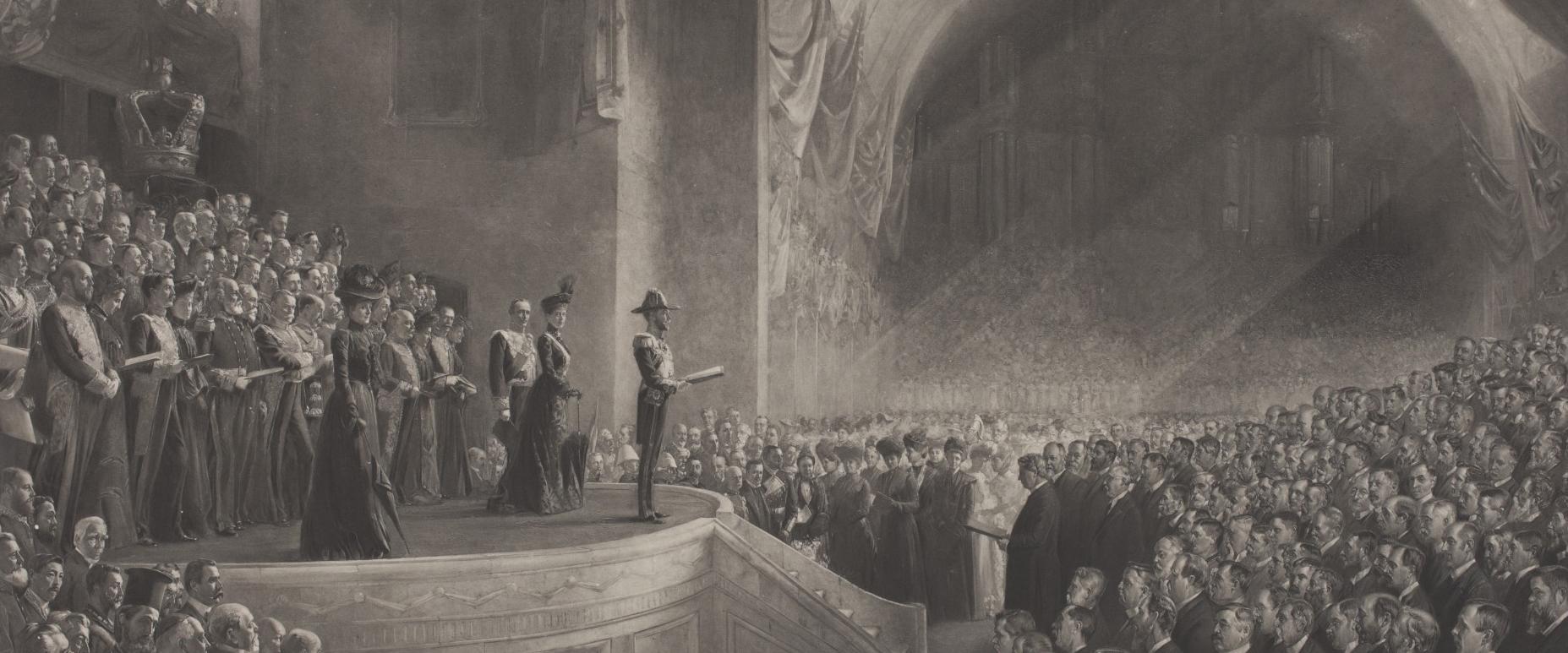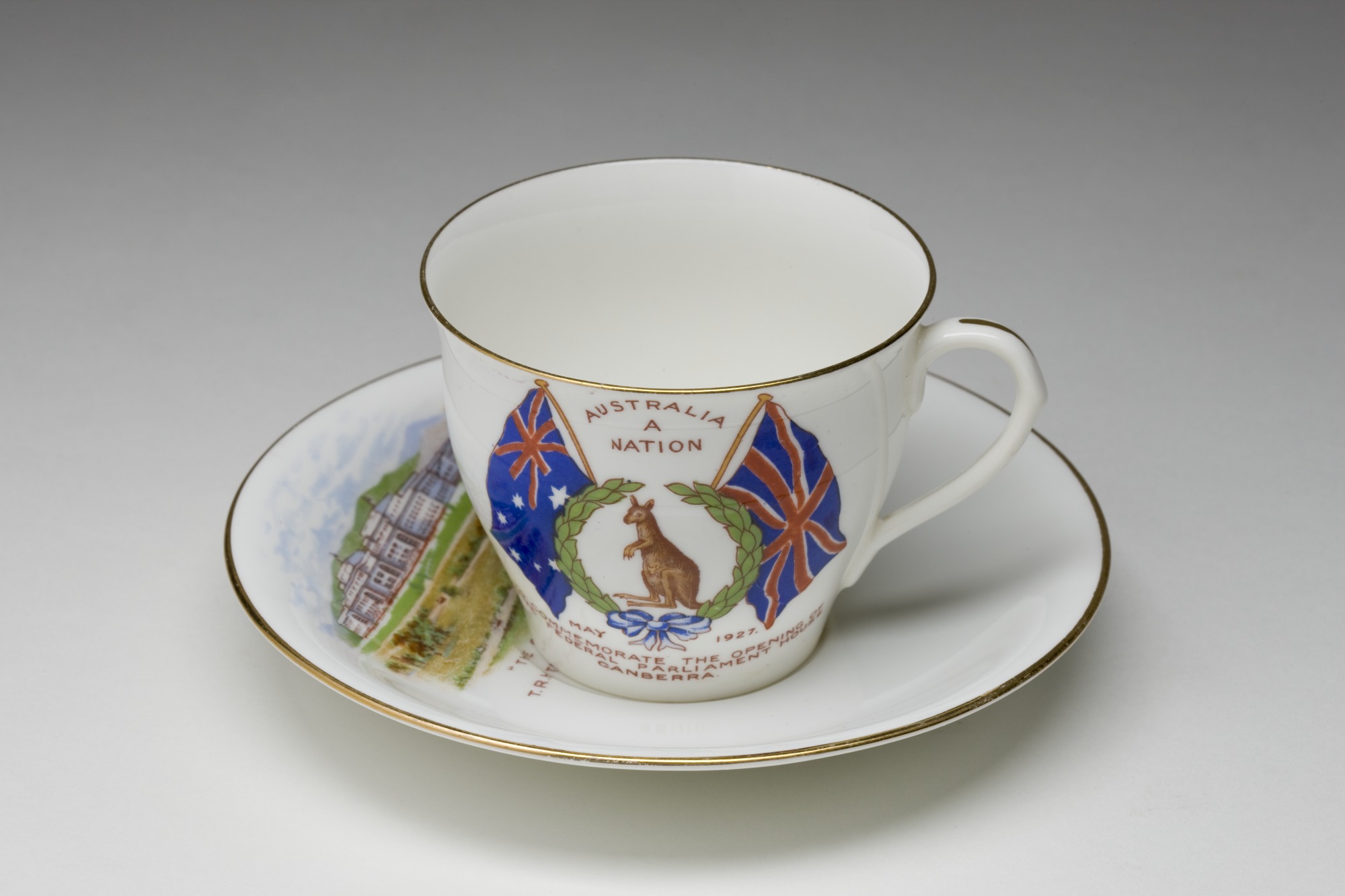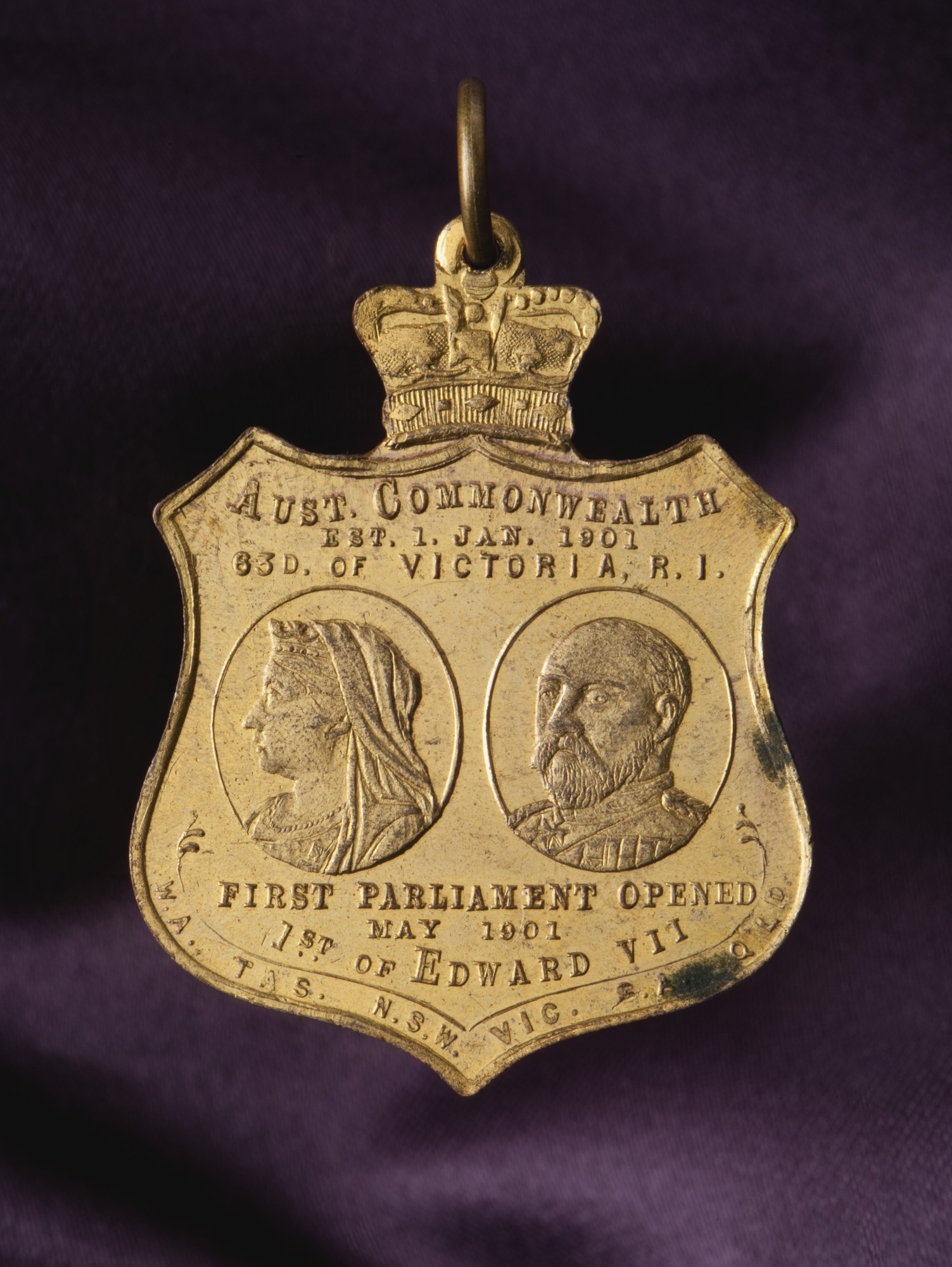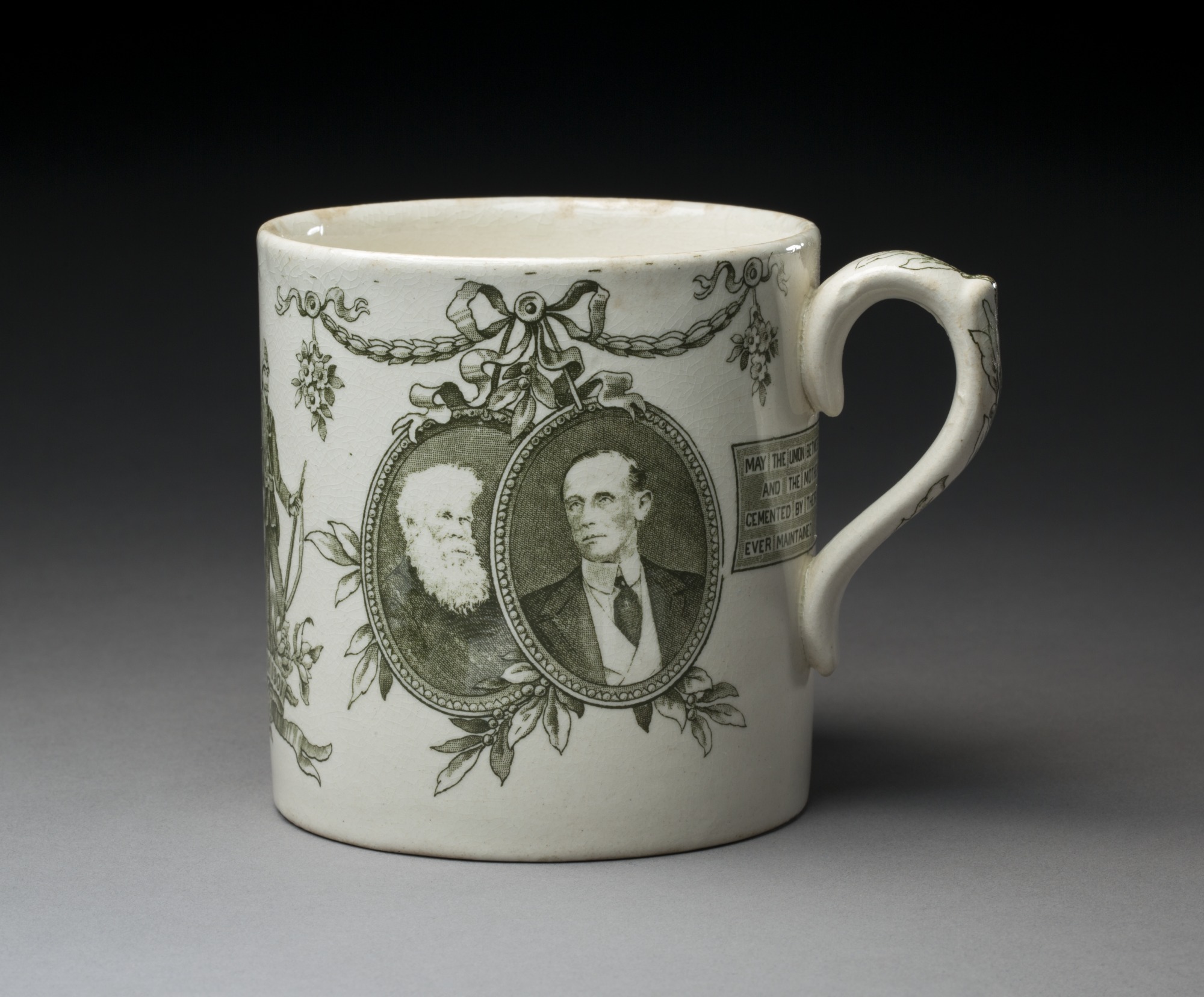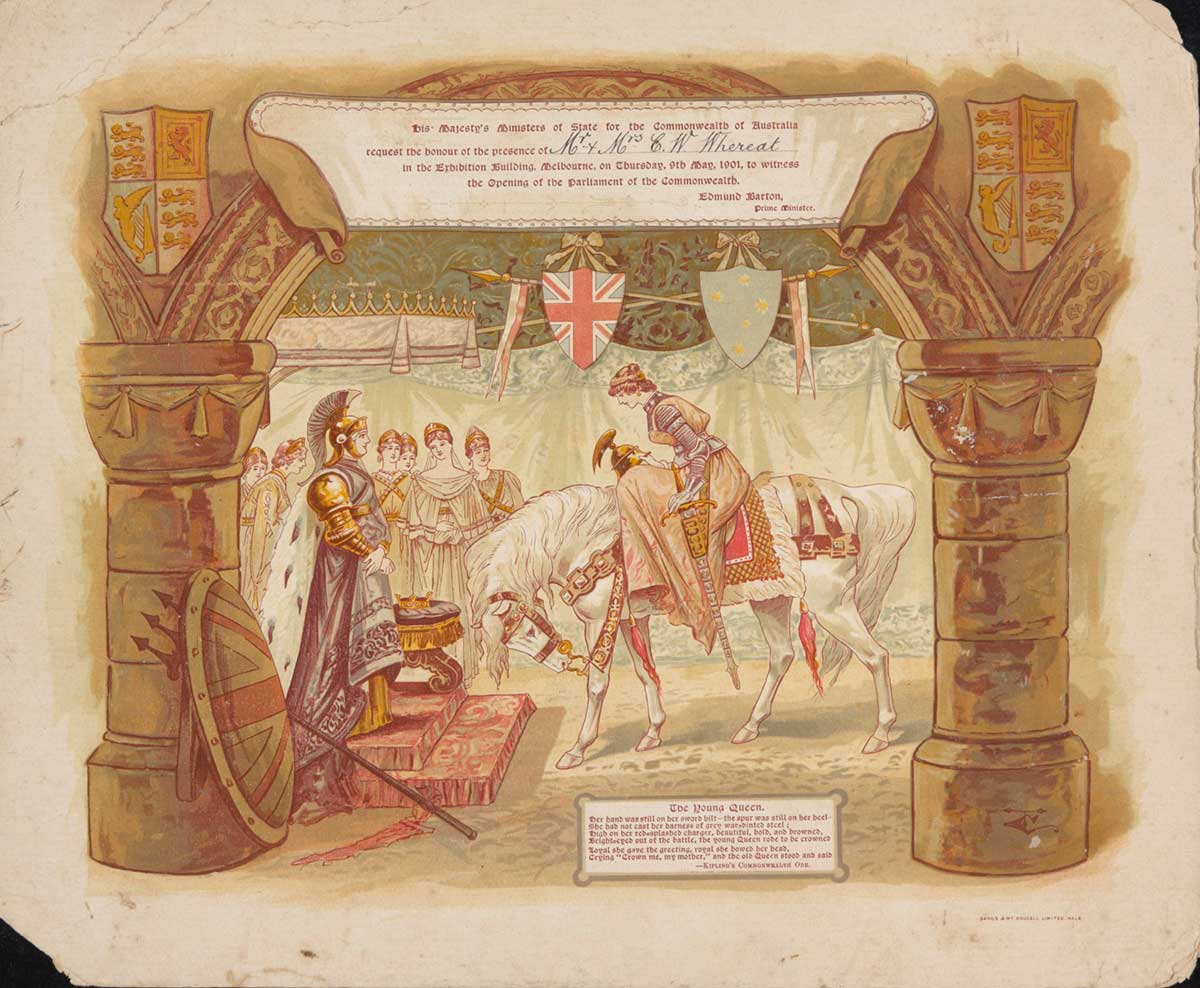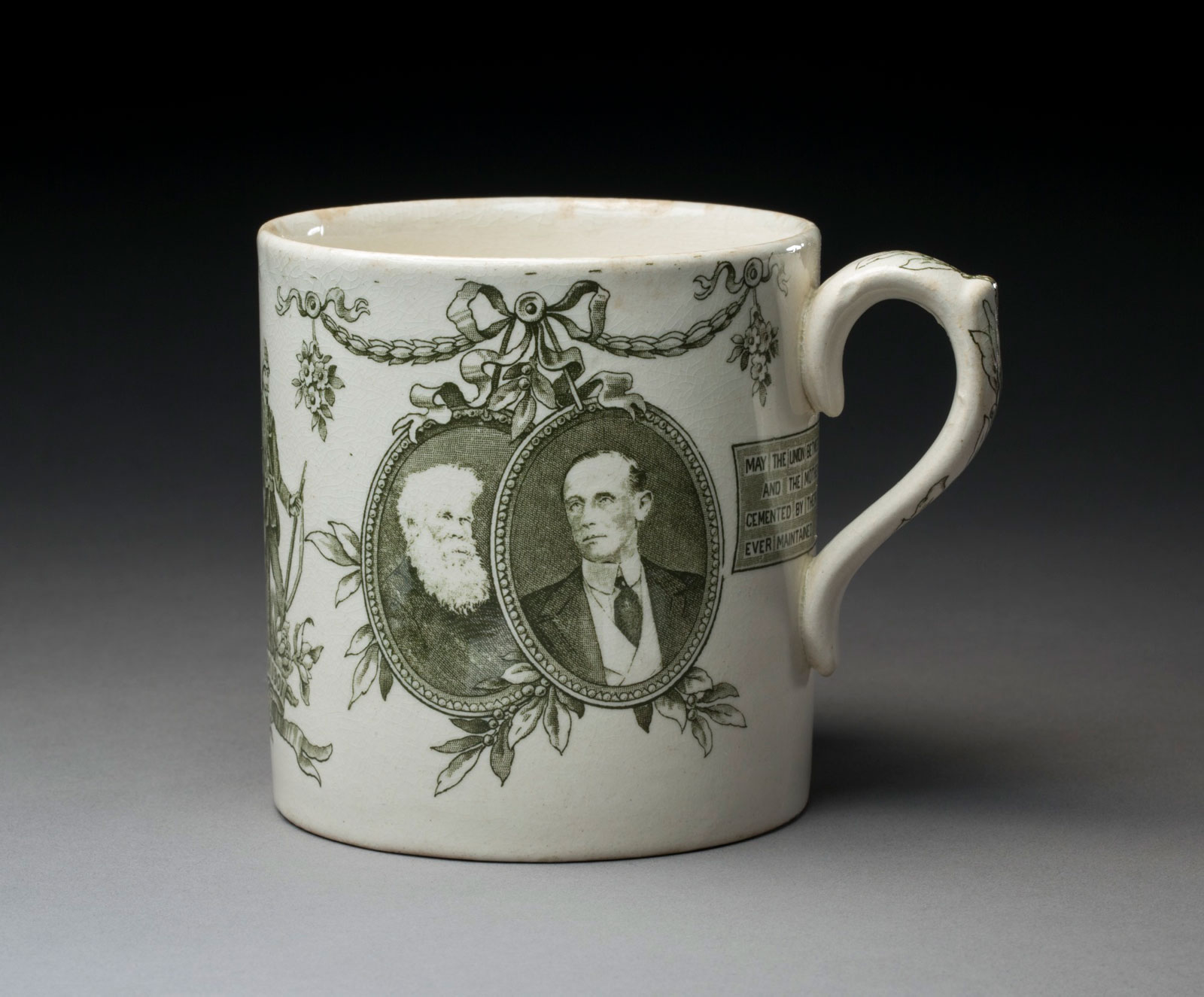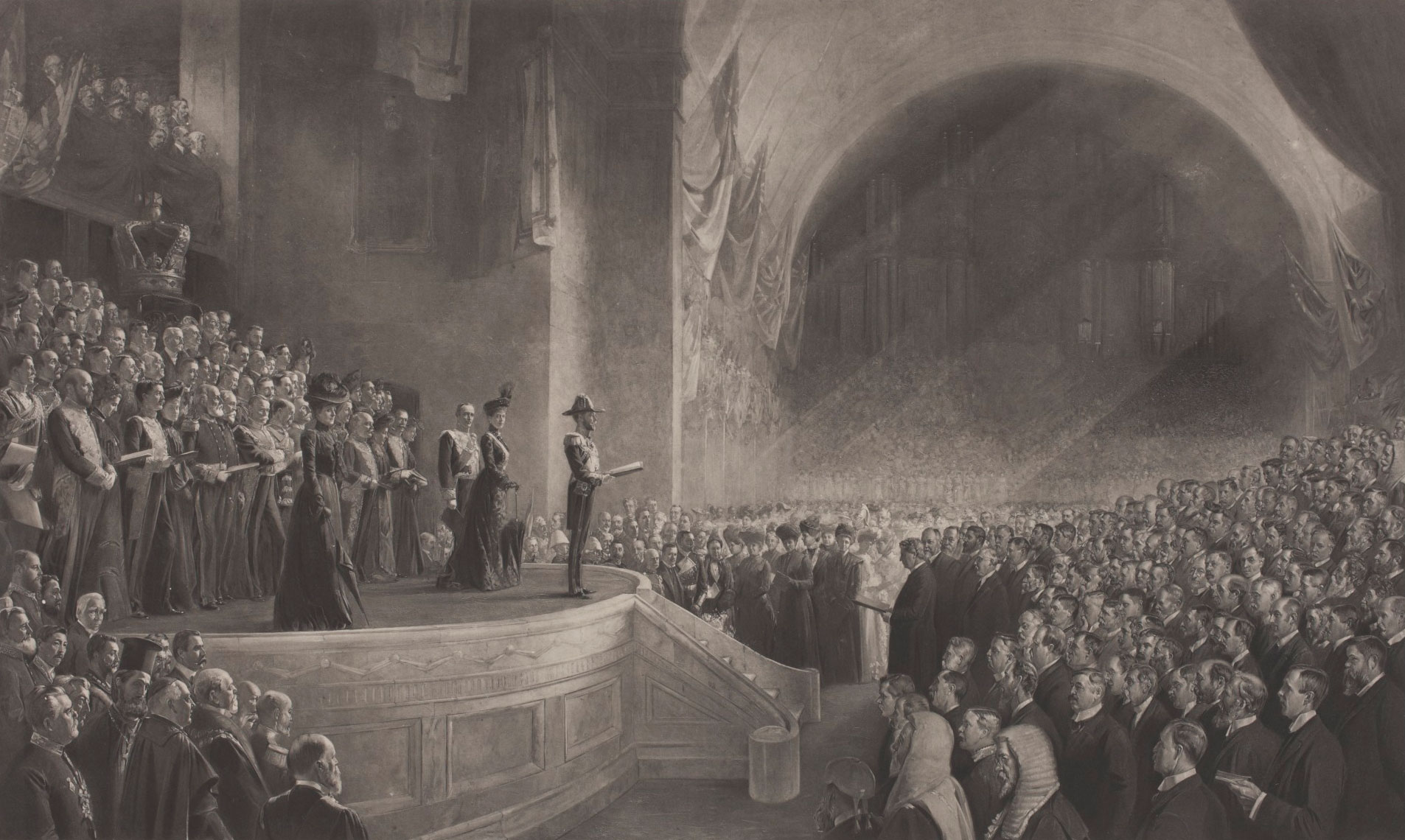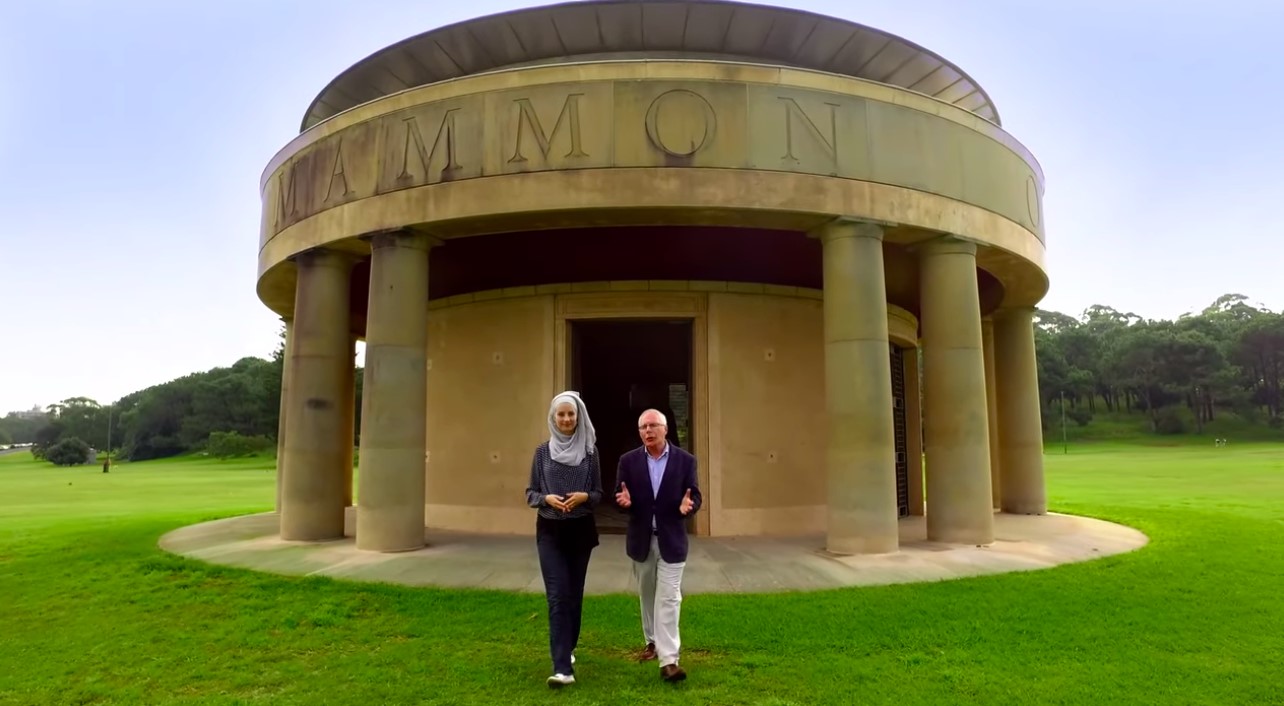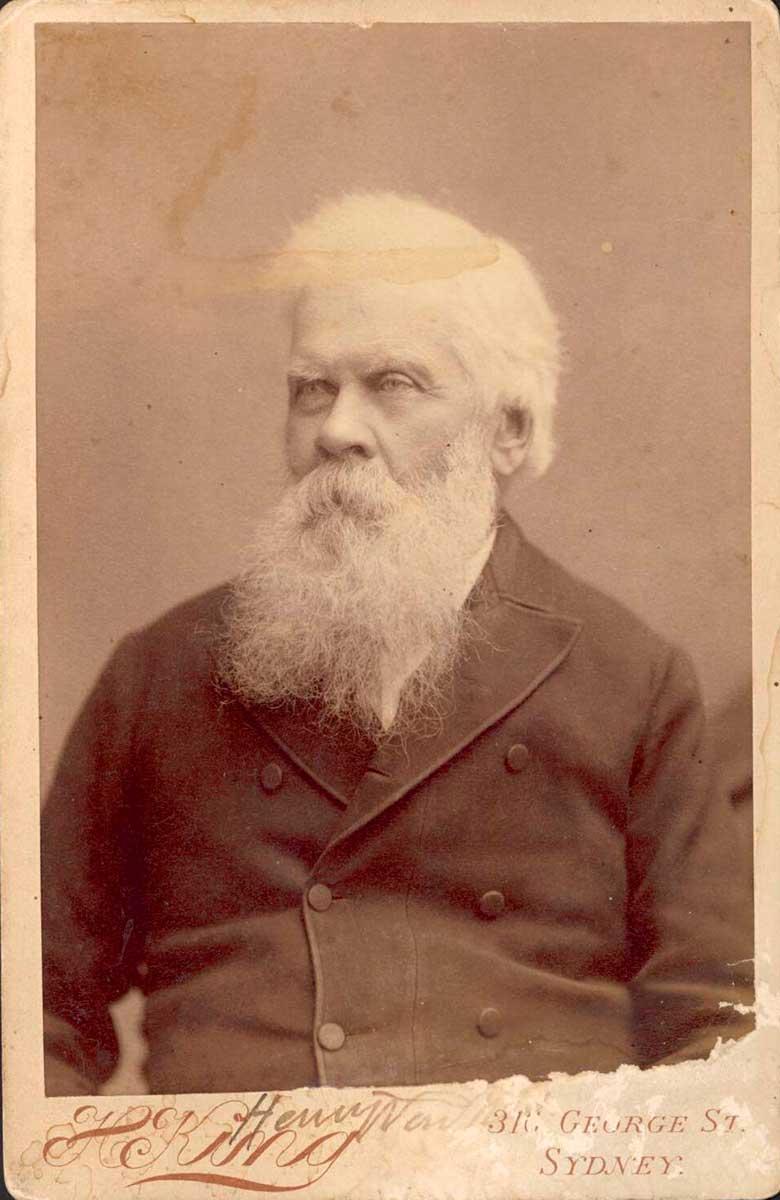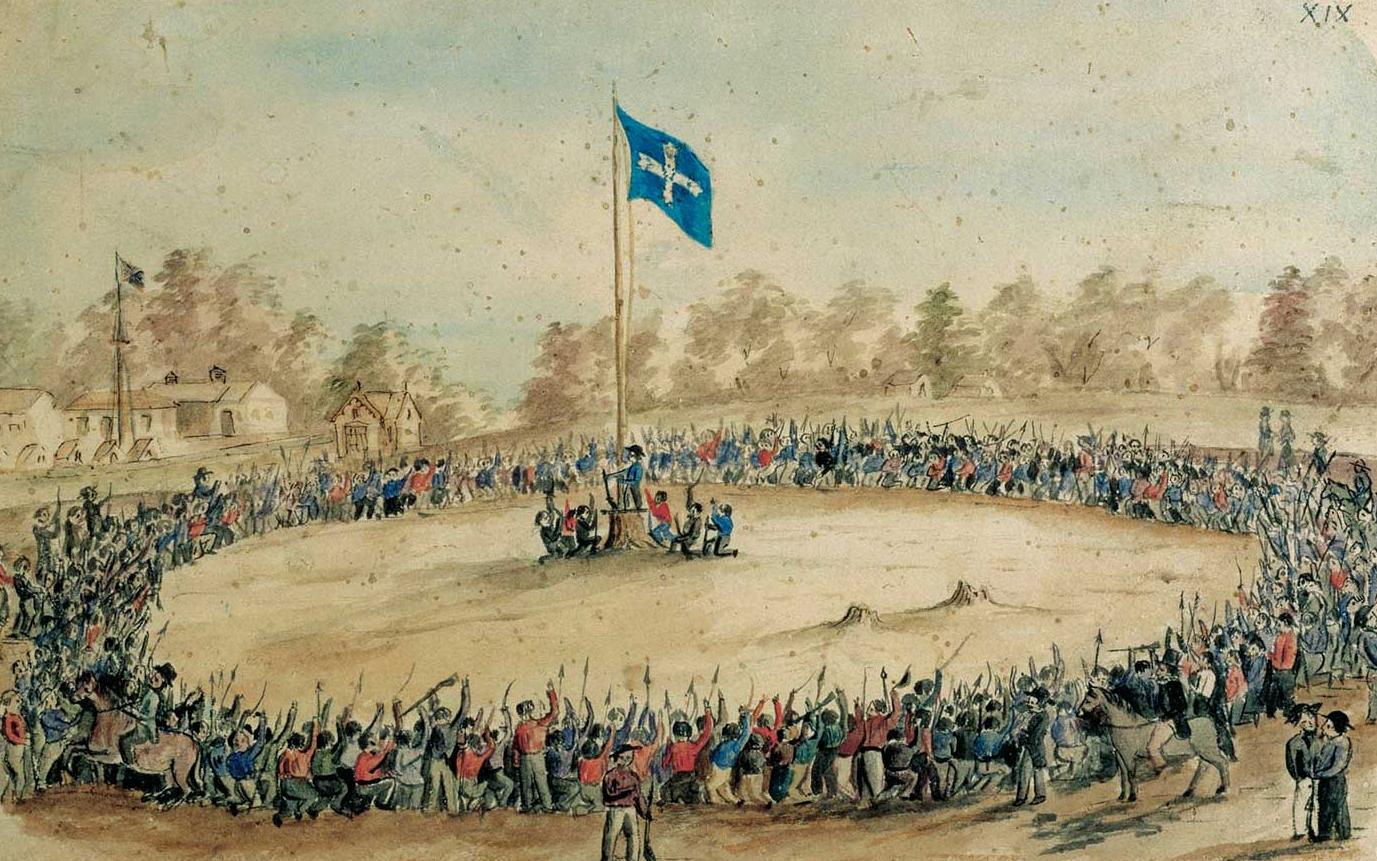Becoming a nation
1901: The six Australian colonies federate to form the Commonwealth of Australia
Becoming a nation
1901: The six Australian colonies federate to form the Commonwealth of Australia
In a snapshot
Australia became a nation on 1 January 1901 after the British Parliament passed laws allowing the six Australian colonies to come together and form the Commonwealth of Australia. Federation created a new national Parliament and an Australian Constitution which divided law making powers between the old colonies (now called states) and the new parliament. It was a remarkable effort that had taken many years of discussion, debate and public votes to achieve.
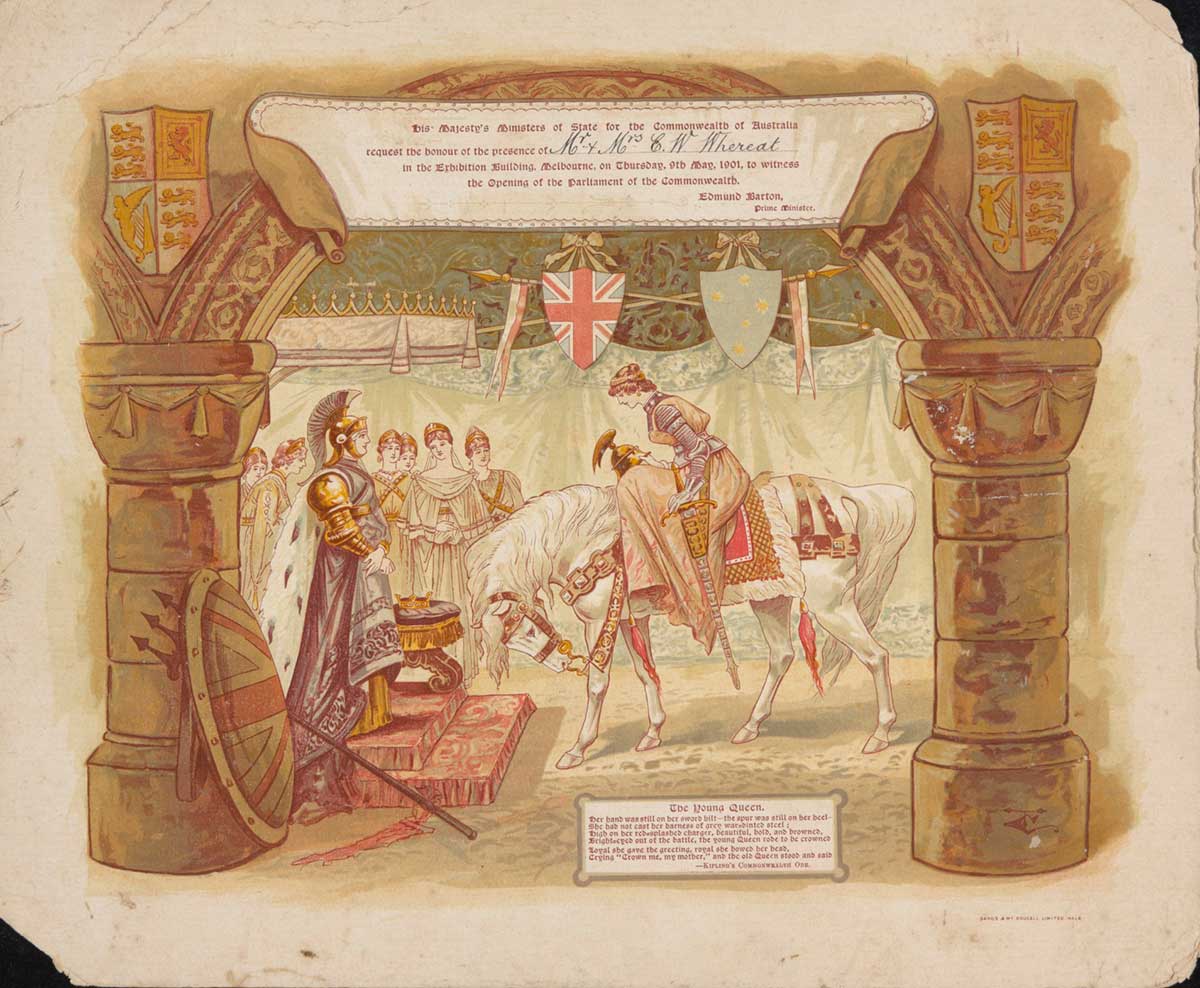
 Can you find out?
Can you find out?
1. How many separate colonies did Australia have by 1900 and which nation controlled them?
2. Why did a growing number of people think the colonies should be unified?
3. What main changes happened as a result of Federation?
What factors led to Federation?
In the late 1800s Australia was made up of six separate British colonies: New South Wales, Victoria, Queensland, South Australia, Tasmania and Western Australia. These colonies partly governed themselves, but they were also under the control of the British Parliament. Each colony had its own laws, railway gauge, postage stamps and taxes. These differences often caused problems, which led people to discuss the benefits of uniting to form a single nation.
By the end of the 1800s most of the people in each colony had been born in Australia and there was a growing sense of national pride. This led many people to believe the colonies should be unified. Also many people wanted to stop non-white immigrants from entering Australia and argued that a national government would be better able to restrict and control immigration from countries in Asia and the Pacific.
Sir Henry Parkes, Premier of New South Wales (the largest colony), was perhaps the greatest supporter of a federated Australia. In 1889 he gave a famous speech known as the ‘Tenterfield Oration’. In the speech he argued that Federation would allow Australia to have a united army for the country’s defence.
During the 1890s politicians and leaders from the six Australian colonies gathered at two Constitutional Conventions. Representatives from New Zealand attended the first convention, but New Zealand eventually decided not to join the federation. At the conventions it was decided that the new nation would be called the ‘Commonwealth of Australia’ and an Australian Constitution was drafted.
‘Believing, as I do, that it is essential to preserve the security and integrity of these colonies, then the whole of our forces should be amalgamated into one great Federal army. Seeing no other means of obtaining these ends, it seems to me that the time is close at hand when we ought to set about creating this great national Government for all Australia.’
How was the Australian Constitution approved?
To achieve Federation the colonies had to approve the draft Constitution. In 1899 referendums were held in New South Wales, Queensland, South Australia, Tasmania and Victoria; these colonies voted to accept the Constitution. At this time many Western Australian politicians didn’t believe that federation was the best option for their colony. In 1900 they changed their mind and held a referendum; Western Australian voters also accepted the Constitution.
Research task
Find out why Western Australia didn’t agree to join the Federation at first. Why did this change a year later?

As the colonies were under British rule, the British Parliament also had to agree to Federation. In 1900 the British Parliament passed its own law to allow Federation to occur. Queen Victoria signed the document creating the Commonwealth of Australia, which came into effect on 1 January 1901.
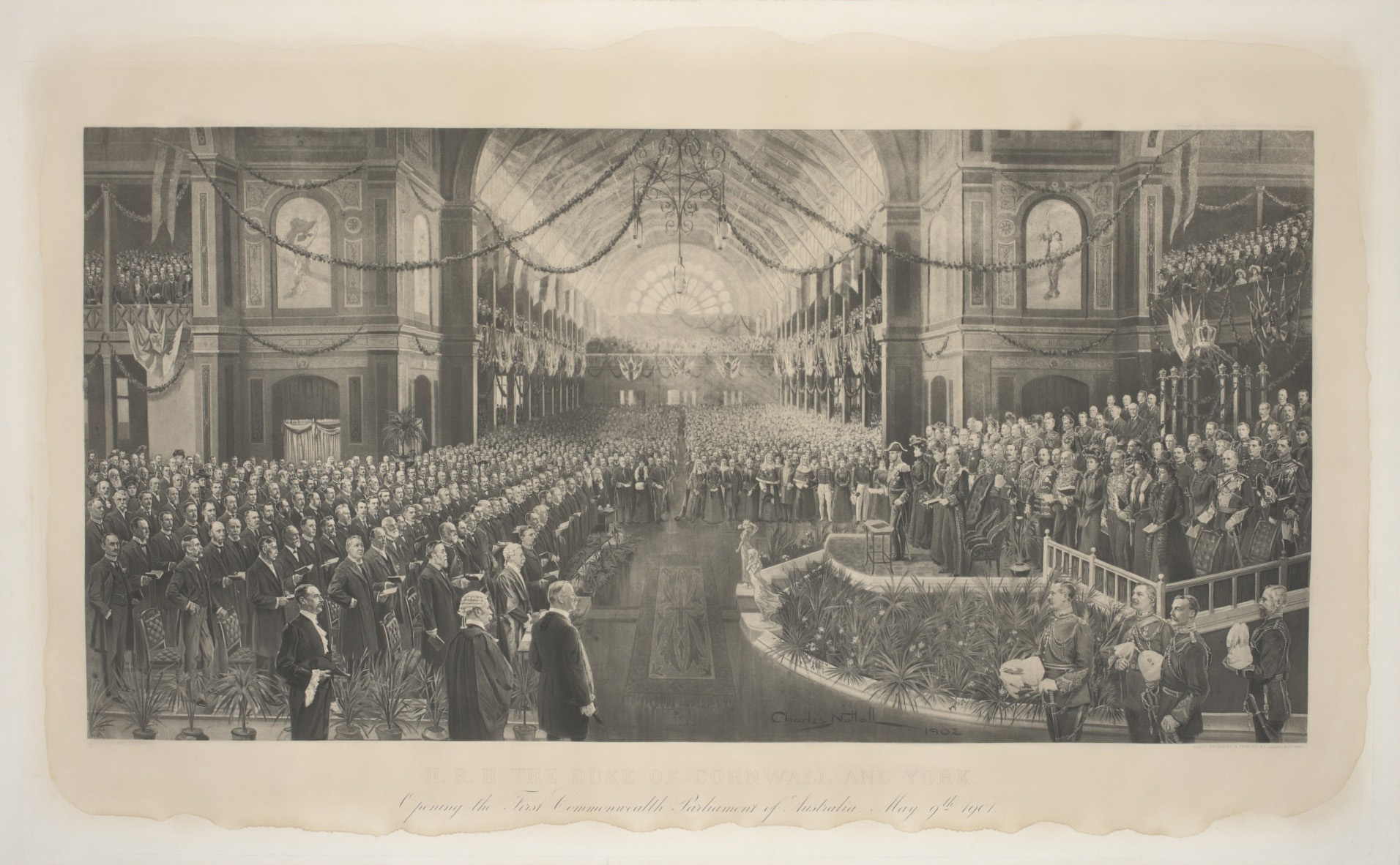
What were the consequences of Federation?
The new Australian Constitution reorganised law-making power in Australia. The colonies (now called states) still controlled their police, hospitals, education and public transport systems, but gave some of their law-making power to the new Commonwealth Government. The Constitution made it clear that the Commonwealth Government had the power to make laws about defence, foreign policy, immigration, trade, telecommunications and postal services.
Research task
In the lead-up to Federation, it was possible that New Zealand might have joined. Do some research to find out why this didn’t happen.
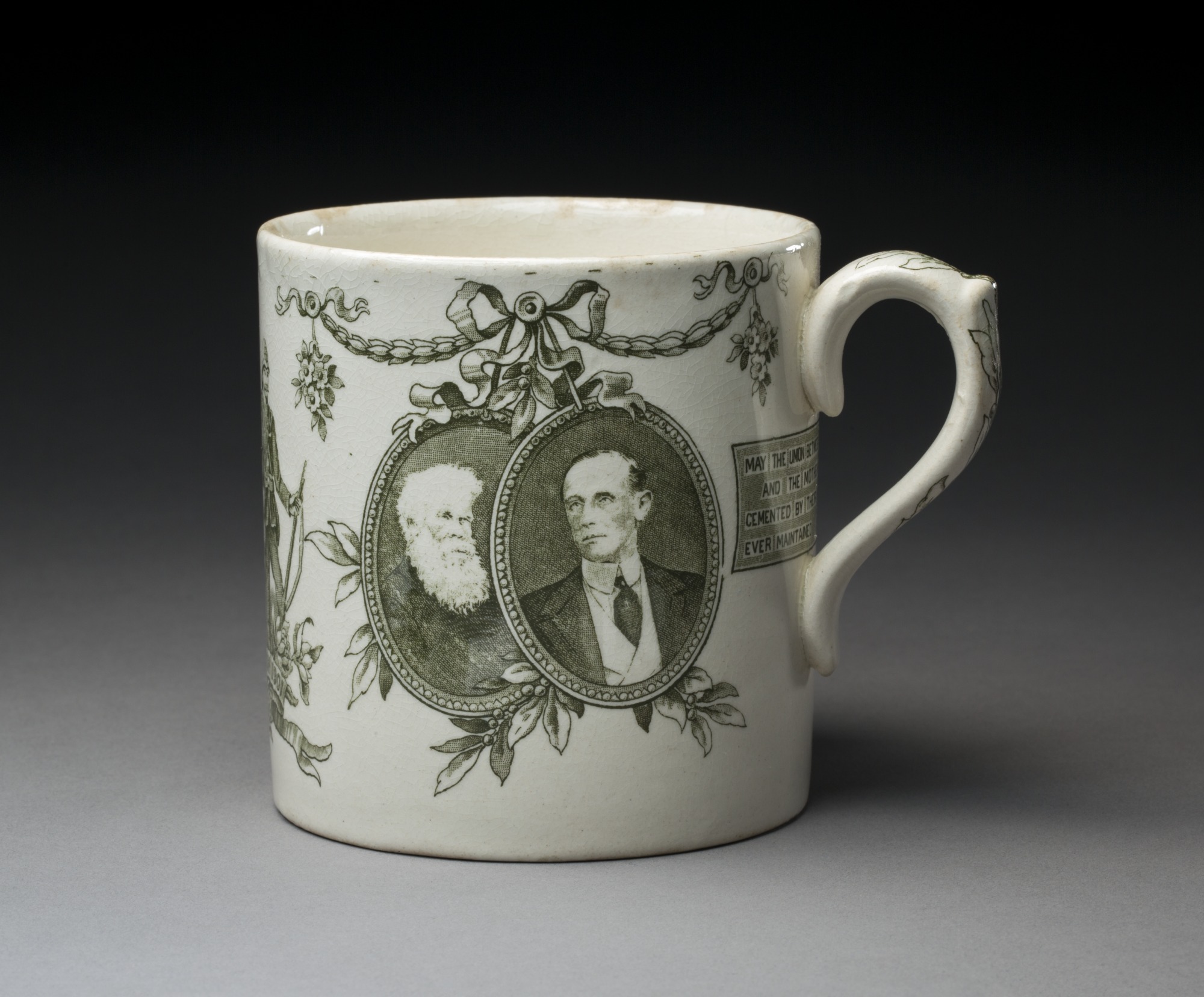
The Constitution created a Commonwealth Parliament with two houses: a lower house (the House of Representatives) where government is formed and new laws introduced, and an upper house (the Senate) where new laws are reviewed. It also created a new High Court of Australia, which upholds Australian laws, interprets the Constitution and settles disputes between the Commonwealth Government and state governments.
Since Federation Australia has governed itself and been largely independent, but the British monarch (queen or king) is still the Australian head of state. The monarch does have some governing powers that place them above all other levels of Australian Government, but they have rarely used these powers.
Read a longer version of this Defining Moment on the National Museum of Australia’s website.
 What did you learn?
What did you learn?
1. How many separate colonies did Australia have by 1900 and which nation controlled them?
2. Why did a growing number of people think the colonies should be unified?
3. What main changes happened as a result of Federation?






